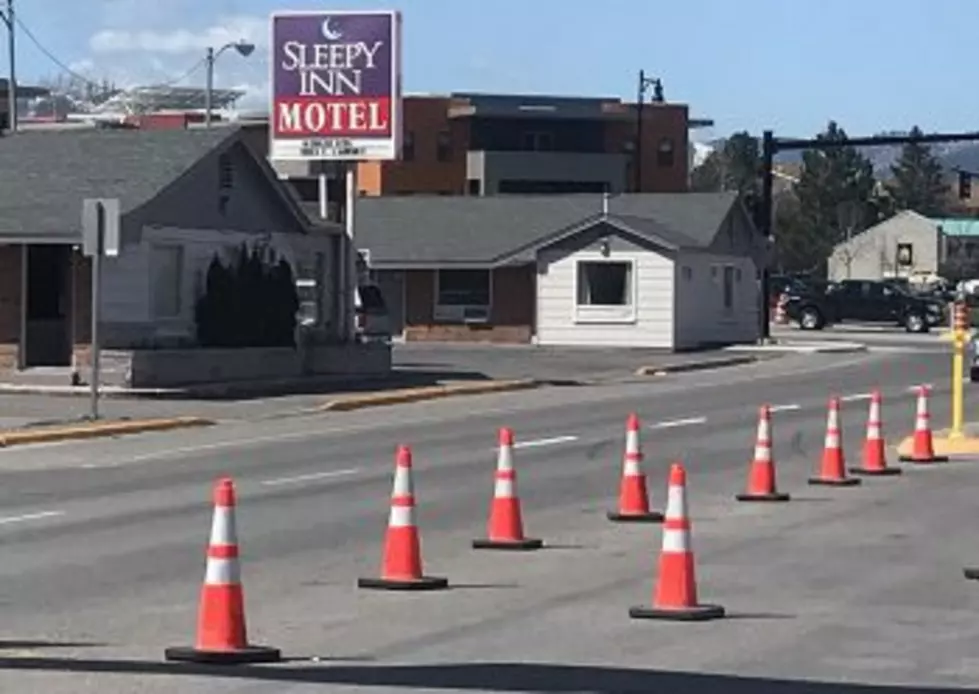
Sleepy Inn meeting isolation needs; questions linger over future management, funding
While operations around the Sleepy Inn as a non-congregant emergency shelter are going “very well,” Missoula County officials are watching changes in the federal government as the pandemic drags on, and how those changes could impact management of the shelter down the road.
Local health officials are also preparing plans for the fall semester at the University of Montana, and how they'd respond if a campus dorm needed to fully quarantined due to an outbreak of COVID-19.
“Their situation and needs are a little more unique than our community at large,” said Adrian Beck, director of Disaster and Emergency Services for the county. “If a dorm facility needed to be quarantined because of their interactions, their communal bathrooms and living environment, that would quickly overwhelm the facilities we have available to us.”
Beck said DES and the Missoula City-County Health Department are working with the university ahead of the fall semester and the annual return of students. She said the state has placed the responsibility of isolation and quarantine on counties, not on the university system.
“We're looking at how we'll bring what they need for their operations under our non-congregant shelter plan so we can all be successful through the fall semester and into the winter,” said Beck. “There's really not a good playbook for it.”
As the health department tackles that front, it's also working to keep the Sleepy Inn safe and operational. Beck said the county has been working with a social worker recently hired at the health department to assist the shelter's clients with case management and other needs.
Four individuals are currently self-isolating at the shelter, which the city purchased for $1.1 million earlier this year.
“These are individuals identified in the community through our community partners as being in that high-risk category over 65 and having underlying health conditions who needed a place they could self isolate due to their non-congregant situation,” Beck said. “This week I believe we'll increase that number of individuals from four to eight.”
Beck said the shelter is also being used to quarantine members of the city's vulnerable population, and the numbers change day to day. While that aspect is going well, she said, the county has worked to make the shelter livable during the hot summer weather.
“As the temperatures came up the last couple weeks, we had to put air conditioning units into the facility,” she said. “You solved one problem to create another, so now we have some electrical things that we're having to work through. But it's day-to-day business there and I'm happily surprised with how smooth that operation is going.”
FEMA granted the request from local health officials to use the shelter for quarantine and isolation during the pandemic. FEMA grants approval every 30 days and it comes up again on Aug. 10.
But county health officials remain confident FEMA will grant approval for another cycle. Beck is also confident that local costs will eventually be reimbursed, through she's not certain when that will happen.
“We've had to go through with a lot of line-item detail about the expenses we've had to date and provide a burdensome amount of justification for every nickel we've spent,” she said. “We continue to be very confident in both conversations with FEMA and the state in that what we're doing is an eligible expense. But what that means as far as timeline, I honestly don't know.”
While FEMA took the lead early in the pandemic in its emergency response, the long-term management will likely be handed over to the U.S. Department of Housing and Urban Development.
Beck said that could have implications on how the Sleepy Inn is managed locally as a non-congregant shelter, though it shouldn't impact funding down the road. If it did, the money would likely be paid up front, where FEMA pays on reimbursement.
“HUD is really looking at this as more of a programmatic activity around homelessness as opposed to the narrow focus FEMA had relative to isolation and quarantine because of COVID,” Beck said. “That could mean shifting local management to another local department more equipped to deal with HUD programming. It makes sense to look at a different (local) agency to transition that operation.”
